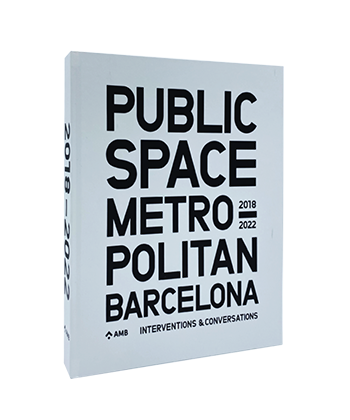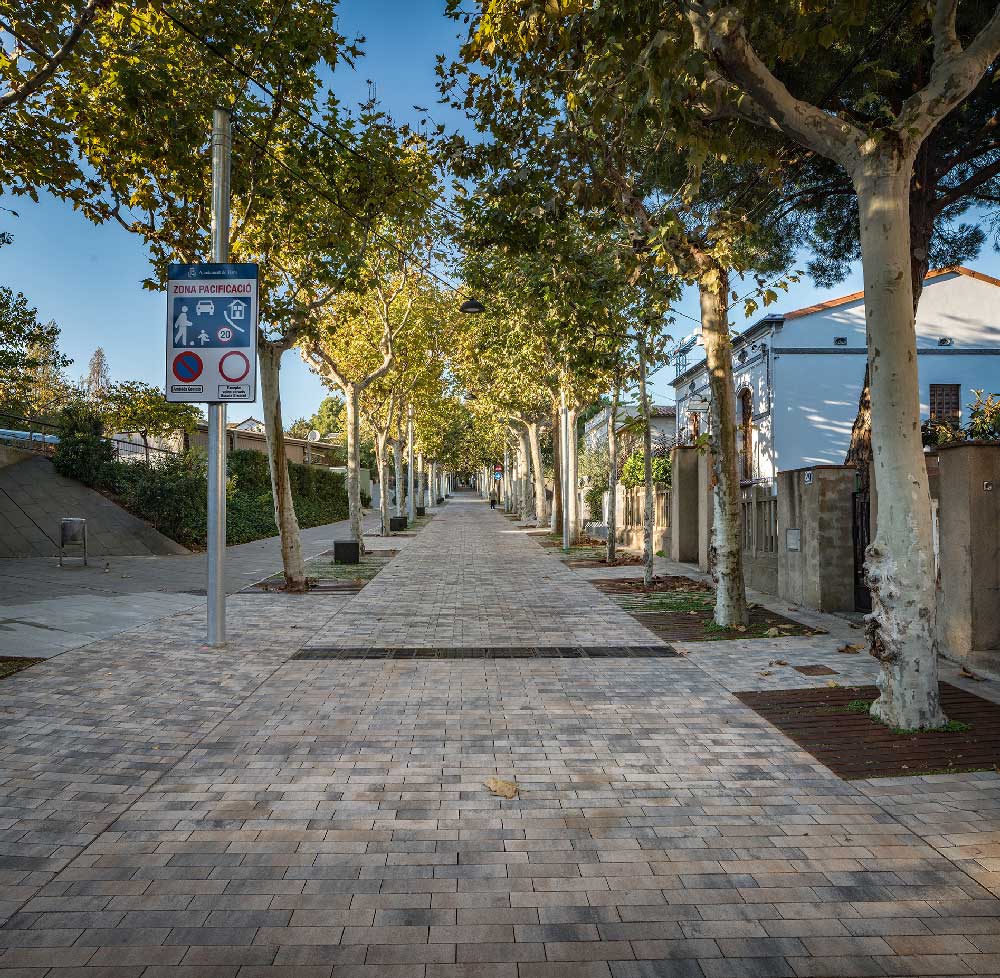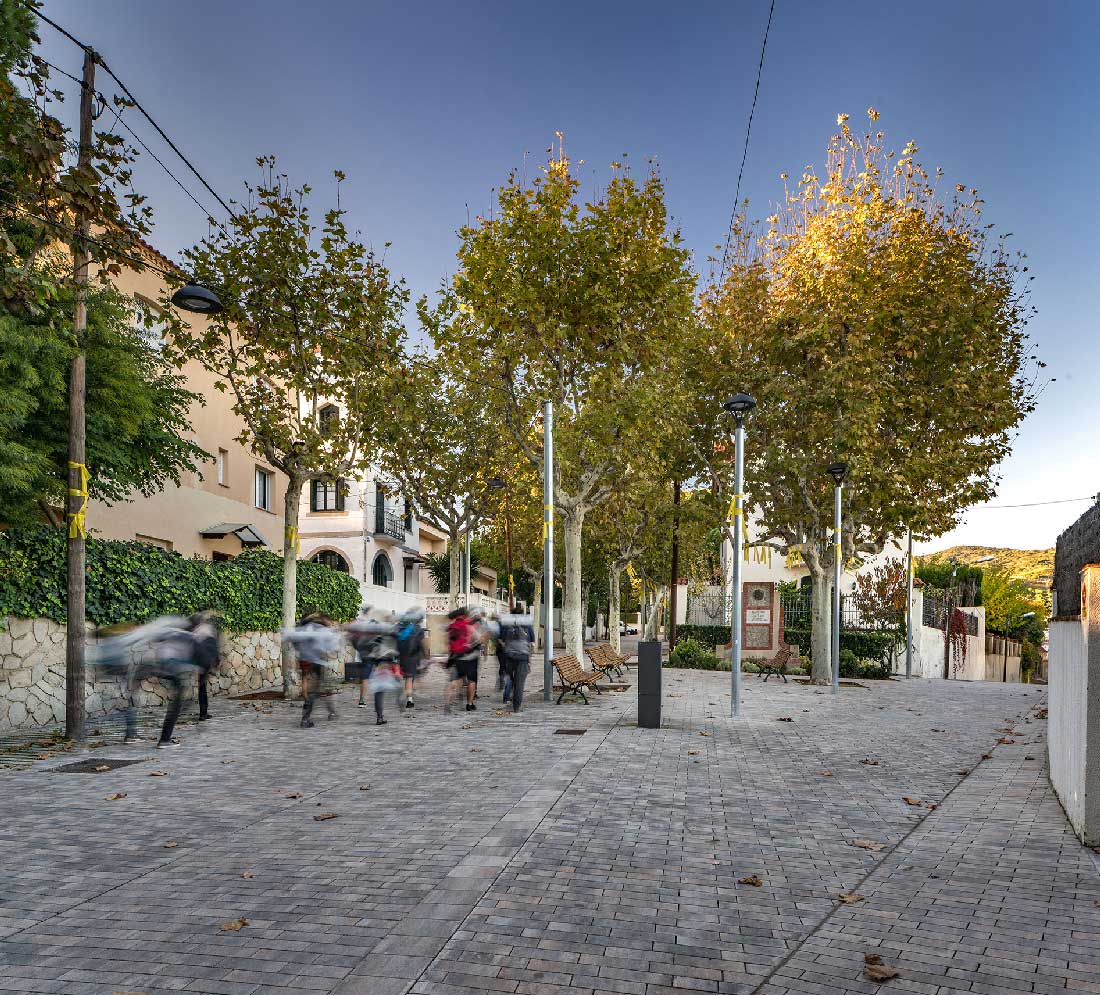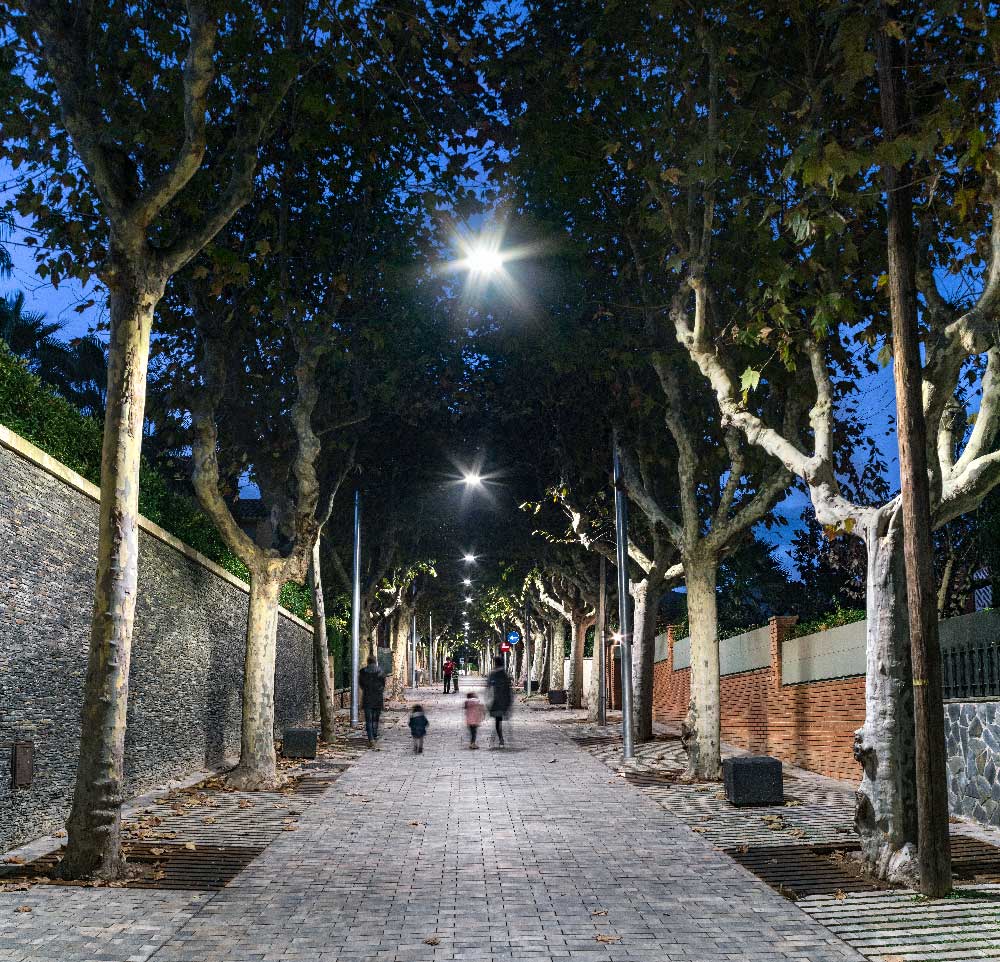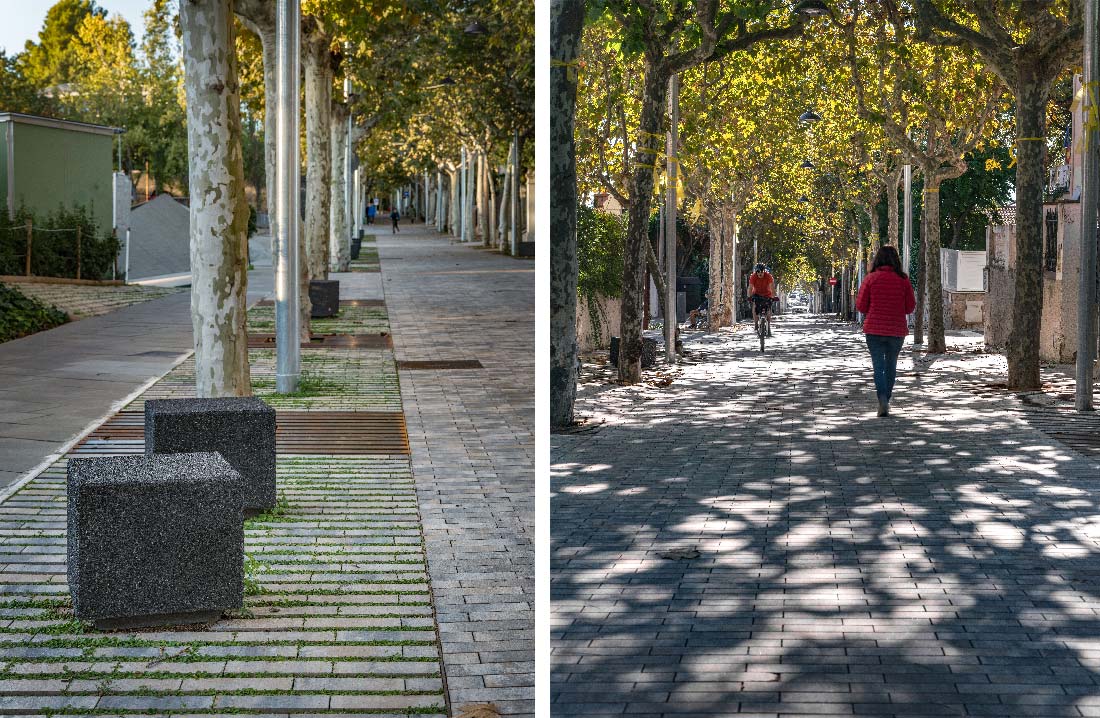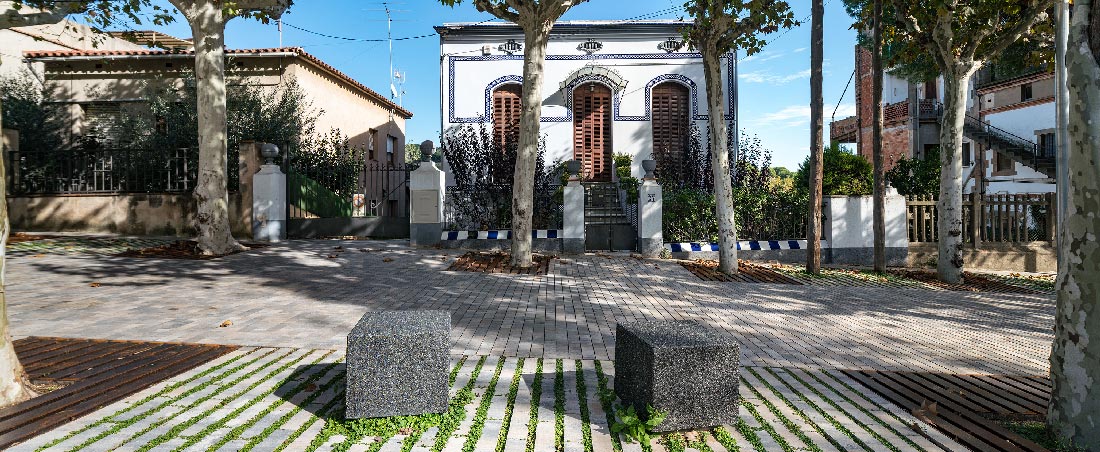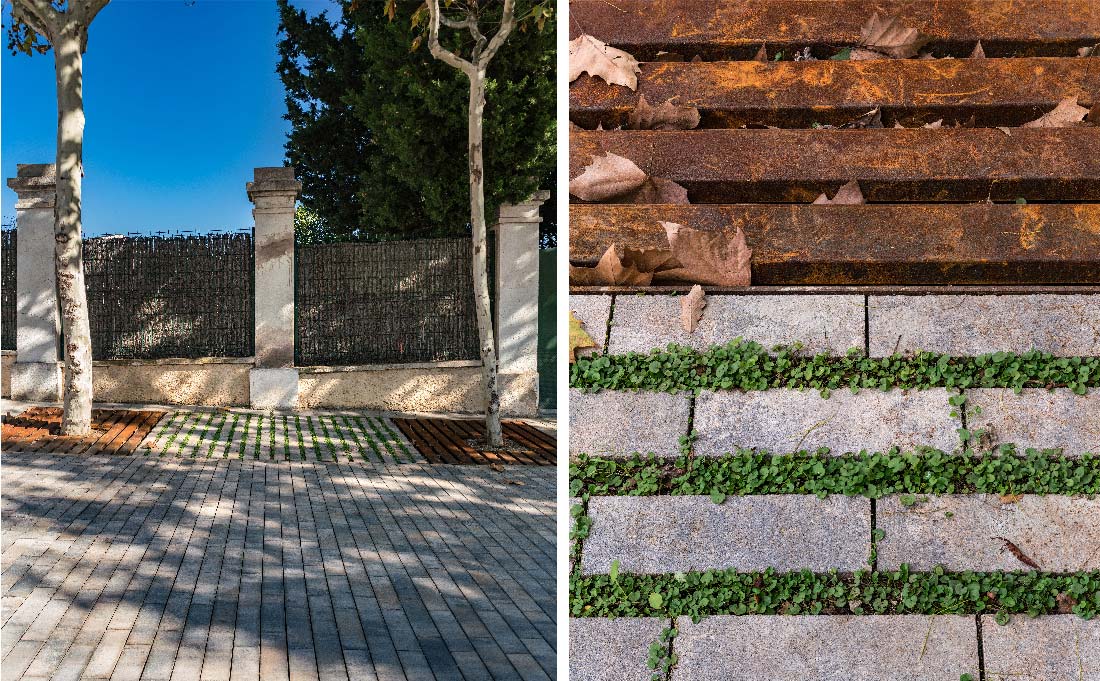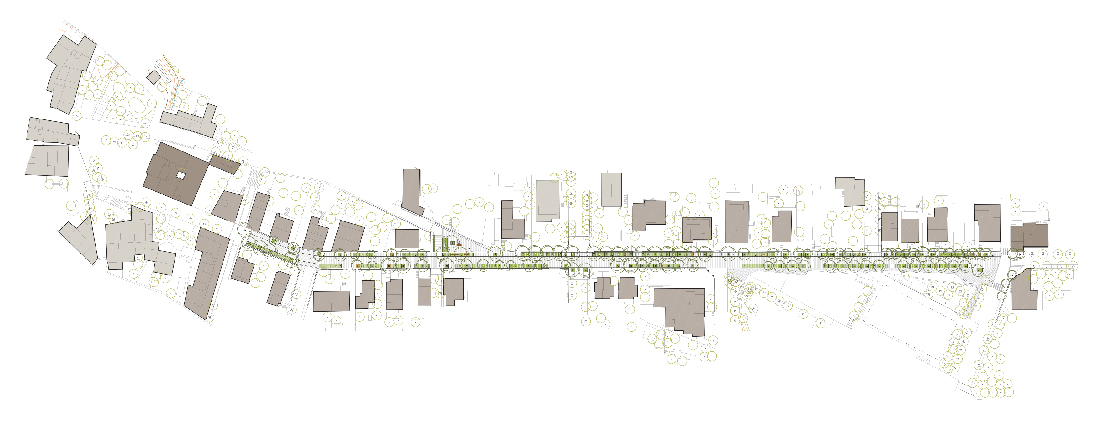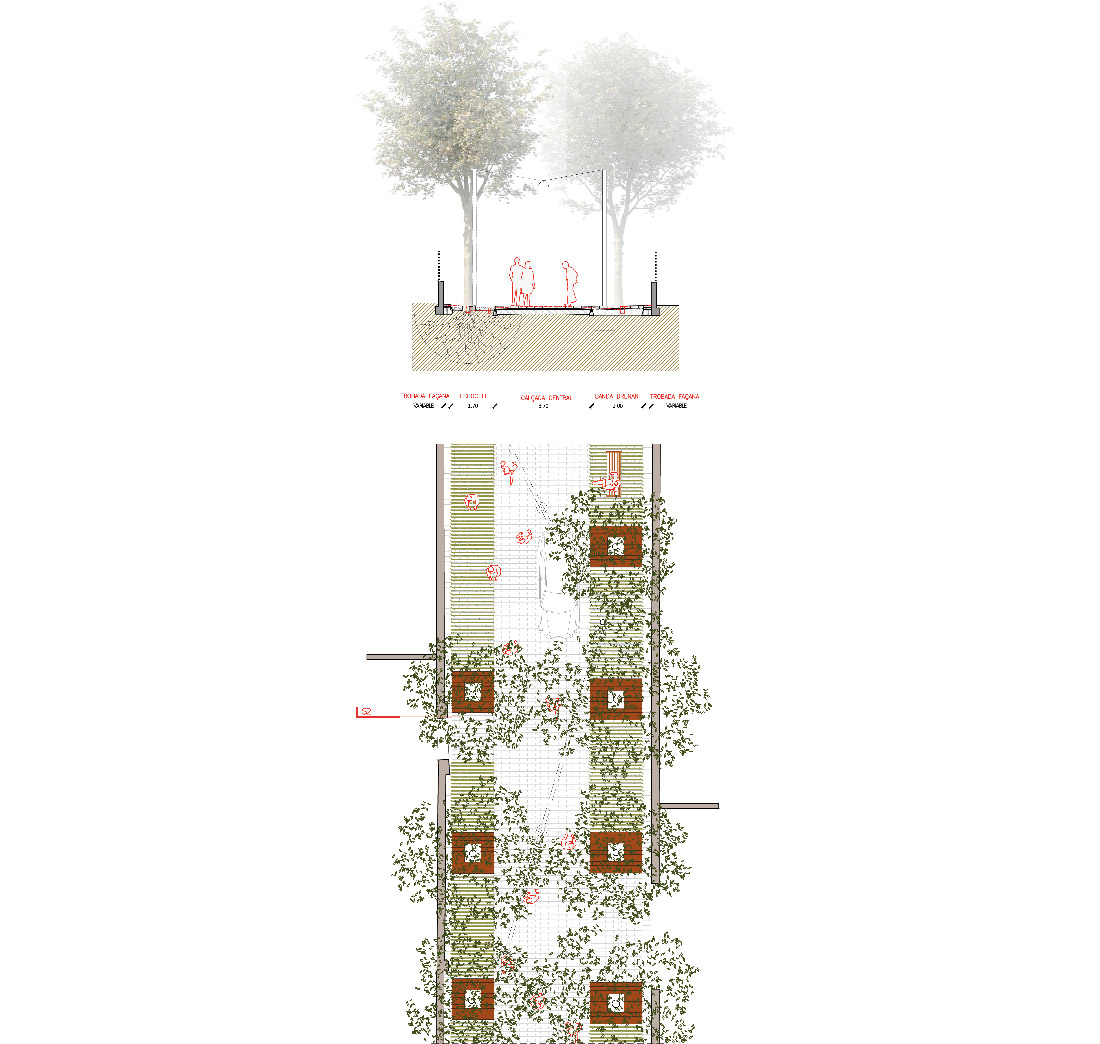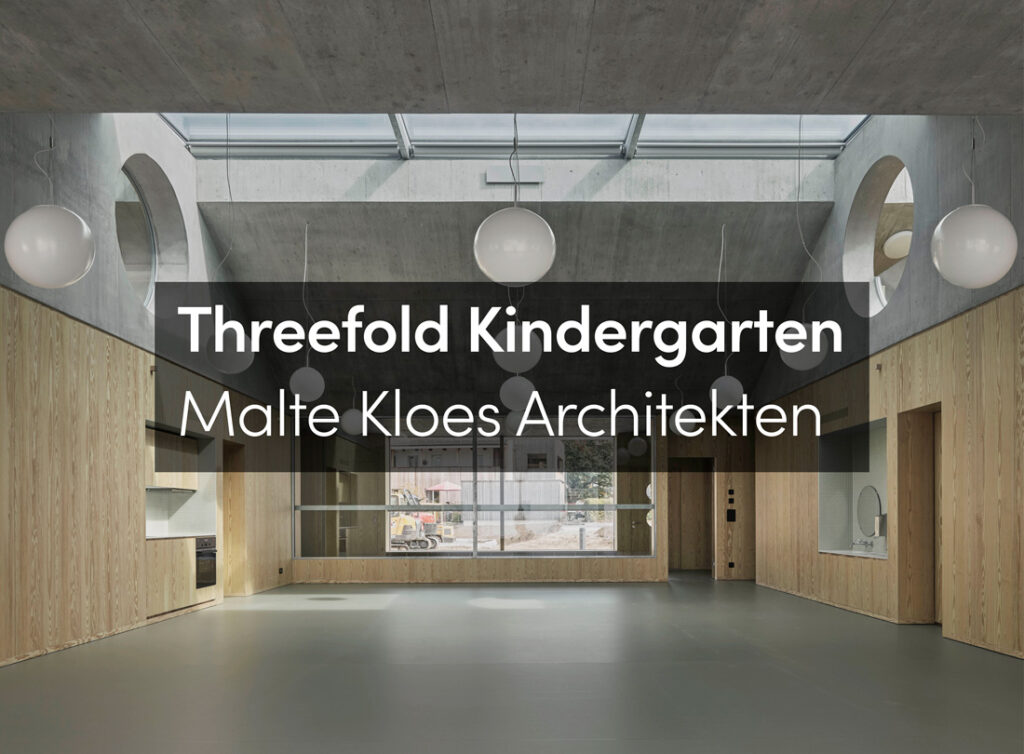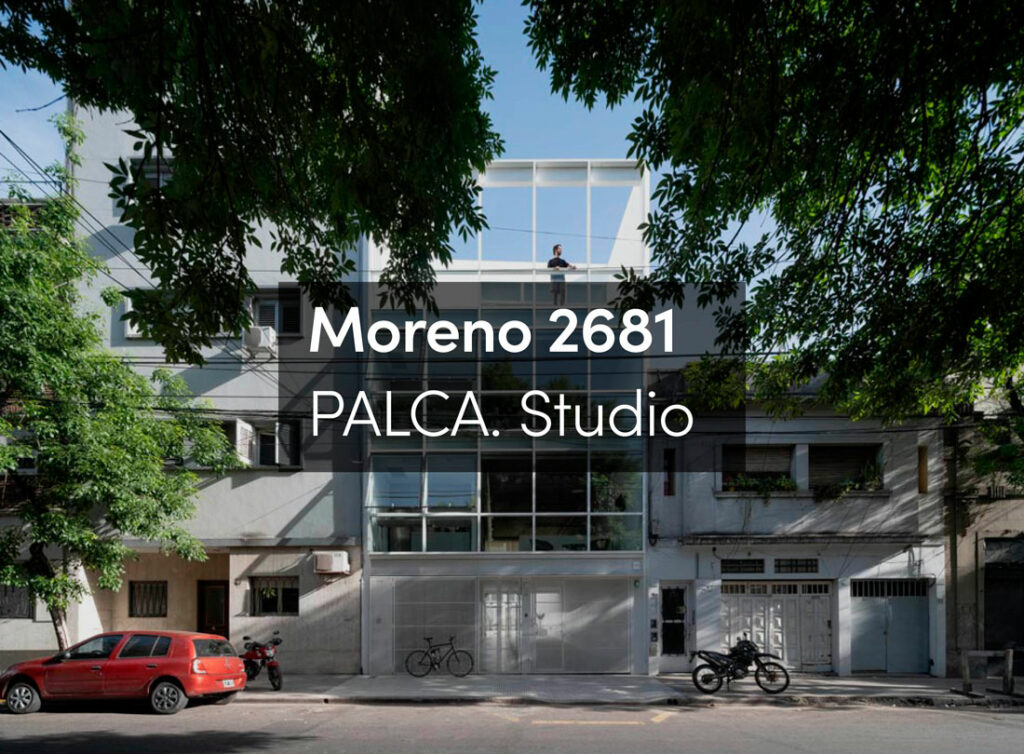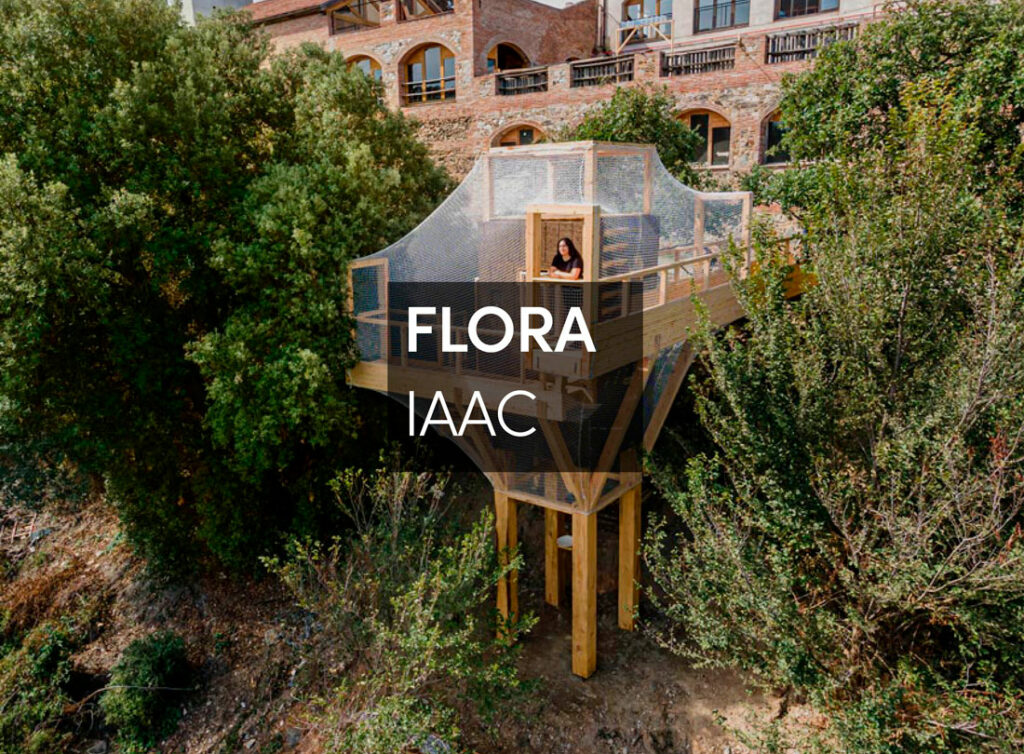Matas Street is the old access road to Tiana from the south, and a direct link from Montgat to Vila Square. This is a unique street within the urban fabric. It is long and narrow, with buildings that are mainly detached houses. The street is just over seven metres wide, with narrow pavements (less than one metre) and a central asphalt carriageway.
The trees are very typical: rows of very old plane trees on either side of the road, creating a shady avenue beneath their leafy canopies. However, their close proximity to façades and walls and the presence of parked cars makes it difficult for pedestrians to walk on the pavements.
The street has some features in terms of facilities and services that will be decisive factors in the final proposal. The electricity and telephone lines and the street lighting are hung on wooden poles along the street. In addition, the street has no drainage system, which affects rainwater collection.
The intervention aims to consolidate and reinforce this civic corridor in the town, to create a street where the residents are the main actors in the public space, restoring it as a space for social interaction, while fostering the integration of the existing green space into a more peaceful, friendly, accessible and quiet urban fabric.
It is therefore obvious that transforming Matas Street means transforming it into a street for public cohabitation. It is a type of road with a reversed priority system in favour of pedestrians and cyclists. The urban improvement is planned at one level with no physical separation between the space for vehicles and the area for pedestrians and cyclists. All necessary measures will be taken to reduce the intensity of vehicle traffic, such as adapting traffic on this street and the streets crossing it to end south-north flow, and removing all parking spaces to free up more space for pedestrians.
Given the impossibility of walking along the sides of the street, a single platform section is planned, with a single central carriageway where cars and pedestrians can circulate together. This is a central area with two softer strips on the sides that frame the new tree pits, creating new spaces for people to interact, with the possible inclusion of furniture.
The street is to be paved with 30 x 10 cm precast concrete paving, with different variations in the layout. It will be laid continuously in the central strip, while on the sides, except for the entrances to homes, the joints between the different rows will be widened to enable rainwater drainage and the growth of vegetation. This will provide effective aeration for the tree roots, and avoid the construction of a new network of drains, which has a positive impact on the total cost of the work.
The lighting is based on an overhead zigzag line, which disappears among the leaves in summer, and means the lights can be located in the centre of the street, optimising performance and minimising the shadows created.
After the intervention is completed, Matas Street will no longer be an impassable street for pedestrians, and will become a new major green and civic corridor in the centre of Tiana. The resulting space is a very pleasant place to walk, as the preserved plane trees create a “living green vault” encompassing an important welcoming environment. The road invites all the city’s residents to live together in a pleasant, clean environment, with enhanced greenery and rest areas, and accessible traffic that prioritises pedestrians.
The aim of preserving the existing plants is particularly important. This has involved rethinking the implementation of traditional street infrastructures: rainwater is not collected, but permeates instead; the lighting is hung from overhead lines rather than underground, etc. This all reduces the total cost and enables new strategies to be explored to bring new architectural value.
Finally, the new Matas Street creates a new paradigm for future work on the cross streets and the surrounding area, extending the same criteria for action and creating an entire living network of routes for residents, school routes, etc.
